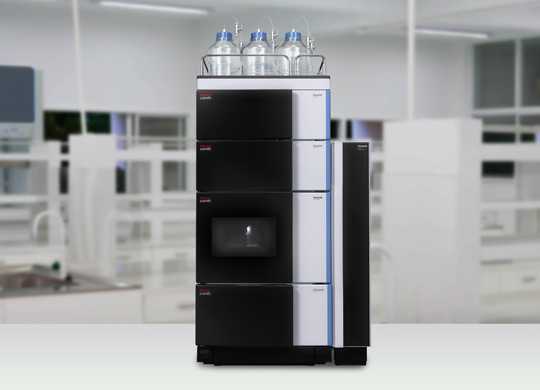Agilent Technologies has announced a range of new products designed to deliver improved analytical and business outcomes for laboratories involved in a variety of analytical pursuits, including food testing, environmental screening, and metabolomics research.
The centerpiece of the announcement, the new Agilent 6546 quadrupole time-of-flight LC/MS system, gives analysts the ability to acquire high-resolution data across an unprecedented dynamic range. This innovative instrument includes the Q-RAI (Quadrupole-Resolved All Ions), a data-independent acquisition mode which reduces the complexity of MS/MS spectra while maximising the accuracy and quality of the data acquired.
"The Agilent 6546 LC/Q-TOF is a major advancement compared to previous time-of-flight systems because it combines dynamic range with excellent resolution in all conditions (speed, mass range, intensity)," said Nicola Zamboni, head of the Swiss Federal Institute of Technology in Zurich. "In our lab, the 6546 will be a great instrument for challenging applications such as 13C metabolic flux analysis, high-throughput mass spectrometry, and metabolite identification."
MassHunter software complementing the Agilent 6546 LC/Q-TOF includes:
MassHunter Quantitative Analysis 10.0 software with new features that allow labs to more quickly and accurately screen complex sample sets for both target and suspect compounds in a single workflow, ideal for food safety, and environmental analysis.
New MassHunter Classifier software which complements the enhanced method development workflow in the Mass Profiler Professional (MPP) software, enabling faster testing for food authenticity with results that are easier to review.
MassHunter Lipid Annotator that presents theoretical lipid MS/MS annotations for Q-TOF results with support through the MassHunter Mass Profiler Professional Lipidomics workflow.
Agilent also announced the new Agilent Bravo Metabolomics Sample Prep Platform, the perfect partner for the Agilent 6546 LC/Q-TOFwhich provides consistent and accurate preparation of human plasma samples for metabolomics analysis via LC/MS.
"Together, these new products will enable laboratories to spend less time getting the answers they need - and increase the confidence they have in their results," said Monty Benefiel, Agilent vice president, and general manager of the company's Mass Spectrometry Division.

















